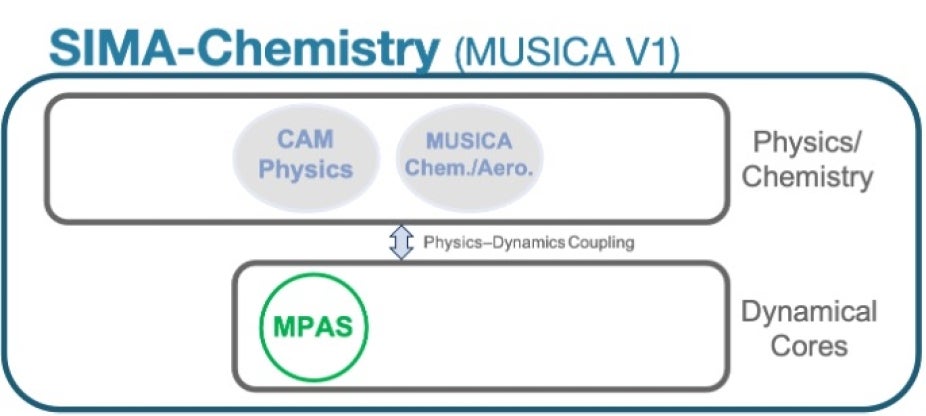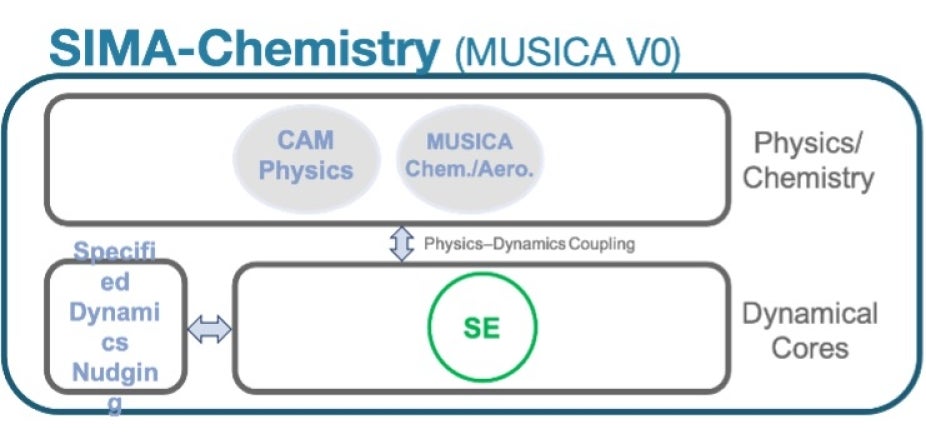Impacts of the Asian Summer Monsoon on Atmospheric Composition
In Summer 2022, the Asian Summer Monsoon Chemical and Climate Impact Project (ACCLIP) will obtain a comprehensive suite of dynamical, chemical, and microphysical measurements in the region of the Asian Summer Monsoon (ASM) anticyclone. The primary goal of ACCLIP is to investigate the impacts of Asian gas and aerosol emissions on global chemistry and climate via the linkage of ASM convection and its large-scale dynamics. In addition to the ASM, it is expected that typhoons in the western Pacific will also affect the composition of the upper troposphere. Thus far, modeling addressing these issues has been performed with global models (NCAR WACCM, NASA GEOS, and ECMWF CAMS) at grid spacings of 25 km or greater (Liang et al., 2021). A comparison of the global model results revealed that these models predicted well the ASM upper-tropospheric shedding events that will be sampled during ACCLIP, but that they needed improvement with transport times and locations of emission sources (Liang et al., 2021). In the near future, modeling is planned using the MUSICA V0 model with global to regional refinement (viz., a variable-resolution 100-km to 14-km grid) over East Asia.


Above: Grid meshes for the ACCLIP study. (Left) MPAS with 15–3 km regional refinement over East Asia (concentric circles centered over Okinawa depict the flight range of the NSF/NCAR GV aircraft). (Right) MUSICA V0 (CAM-Chem SE) with 100 to 14 km regional refinement
Because deep convection is a critical link between emissions and the composition of the upper troposphere, it is important to accurately represent convective transport and wet scavenging of constituents. To explore this, a SIMA configuration with the MPAS dynamical core running in CAM and applying 3-km regional refinement over East Asia will be used to simulate the ASM and its effects on atmospheric composition. These simulations will include chemistry simulated by the Model-Independent Chemistry Module (MICM). The emissions of anthropogenic constituents as well as artificial tracers will be generated by the emissions tool developed for MUSICA V0.
Initially the SIMA configuration will be tested to determine its basic ability to simulate chemical processes and transport with the regionally-refined setup. While there may be some adjustments to the number of constituents to see results in a reasonable time frame, once a viable simulation is produced, the SIMA Chemistry output will be evaluated with both observations and output from other global models run for the experiment period (WACCM, MUSICA V0).
The verified results of SIMA Chemistry will be applied to investigate convective chemical transport, its sensitivity to emission source location, and upper-tropospheric layering of convective plumes. The results will also be compared to those of coarser-grid global models including MPAS run with 15-km uniform grid spacing, MUSICA V0 (CAM-Chem with the SE dynamical core) with both 100–14 km spacing and 100-km uniform grid spacing, and WACCM.
In 2021, SIMA Chemistry with regional refinement and chemistry will initially be evaluated for convection observed during the 2012 Deep Convective Clouds and Chemistry (DC3) field campaign (Barth et al., 2015). Currently, simulations of MPAS (w/regional refinement over the contiguous U.S.) are being performed for DC3 convective event from 11 June 2012, and the DC3 case study will be repeated with the SIMA configuration.
Configurations
Below: Schematic for SIMA Chemistry configurations including the regionally-refined Spectral Element dynamical core, data assimilation capability, CAM physics, and MUSICA chemistry and aerosols. This setup will also couple a land model.

15–3 km refined mesh over E. Asia with chemistry, initialized (ACCLIP field project support)

100–14 km refined mesh over E. Asia with chemistry, initialized (ACCLIP field project support)
Reference
Liang, Q., D. Kinnison, and co-authors (2021) The Impact of the Asian Summer Monsoon and Typhoons on the UT/LS Chemical Composition: Implications from ACCLIP Dry-Run Efforts Using the Chemistry Models and Satellite Measurements, 21st Atmospheric Chemistry Conference, AMS Annual Meeting, (Presentation Video)